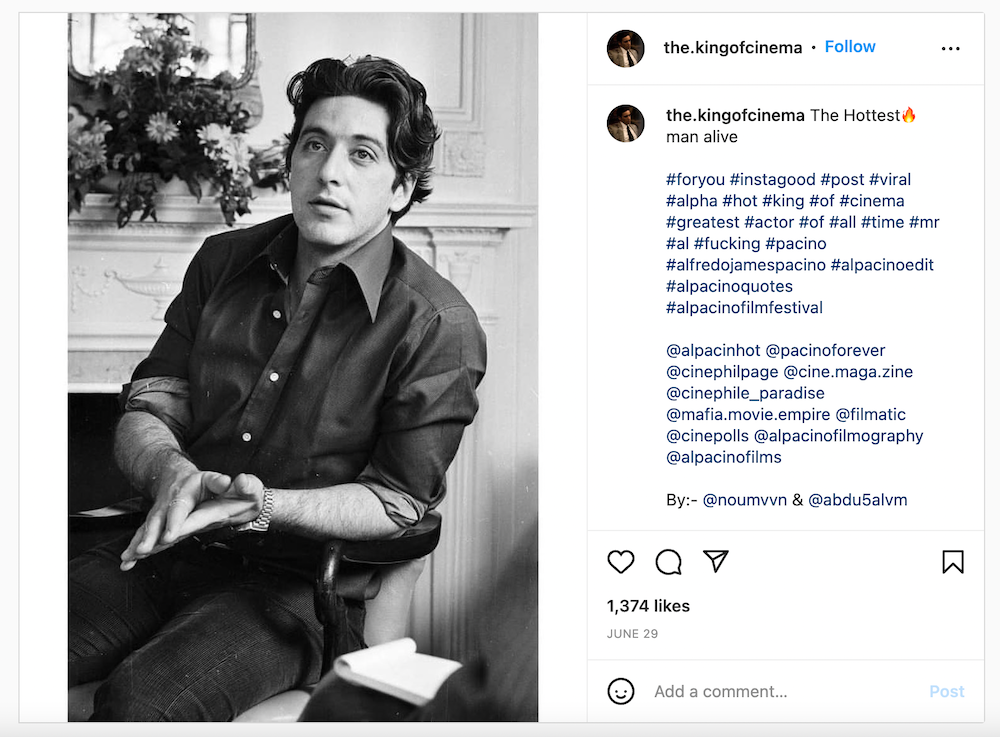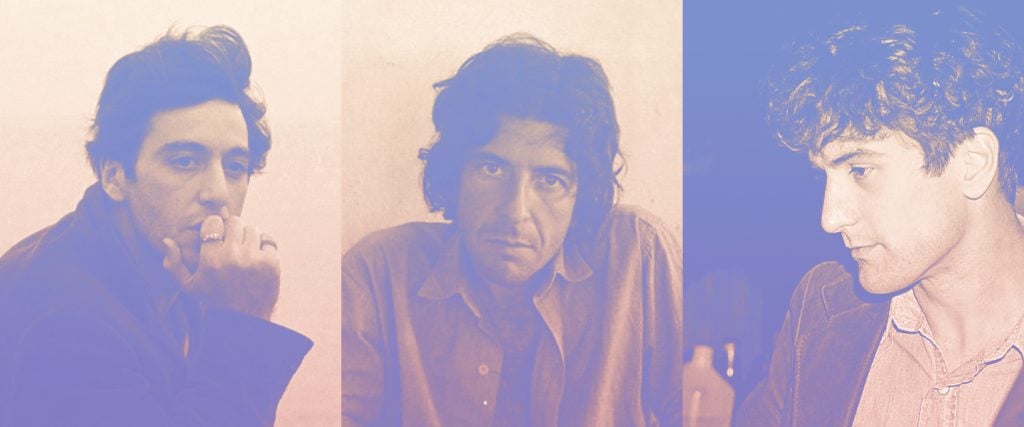There’s often talk about the way men “used to be.” Ask those committed to falsely romanticizing the past, and they’ll tell you men used to be brave, they used to be providers and they used to be polite. And lately, on Twitter, TikTok and elsewhere, their gripe with men today hinges on one particular comparison: Men used to look like Al Pacino, and now they don’t.
Pacino has long been a favorite nostalgic heartthrob for young people, famous enough and in so many classic films that he’s remained familiar no matter the number of decades that have gone by. Robert De Niro has received similar treatment, appearing in adoring Tumblr posts, TikTok compilations and Instagram fanpages over the last several years. Previous decades idolized men like James Dean or young Marlon Brando, but today, 50 years after The Godfather and Taxi Driver, Pacino and De Niro have begun to fulfill the role of vintage sex symbol.
As is always the case with this type of nostalgia, people often see their style, attitude and the mere fact that they’re not on social media as being superior to the men of today. And surely, through the texture of the 35-millimeter photos of these men in their youth, there appears to be something more interesting about them, too. Young Pacino fits the artsy, shaggy-haired aesthetic that many yearn for particularly well, but it’s not just the fact that he’s handsome and talented that’s made him stick in our memories. Instead, it’s something far more complicated.
Last week, @prozac_chan on Twitter shared a set of four photos featuring young Pacino, Leonard Cohen, Joan Manuel Serrat and De Niro. “The phenotype we lost,” she wrote. Rather quickly, hundreds of people pointed out that, in fact, Mediterranean, Middle Eastern and Jewish men do still exist and often look somewhat like this. Seriously, they implored, just go outside and look for them.
Most likely, though, @prozac_chan is using the term “phenotype” to refer to the aforementioned aesthetic of dark-haired, angular-featured men photographed on film in and around the 1970s. It’s basically a reformulation of the “when did this become hotter than this” meme that circulated in 2012 and mocked the tendency some have to prefer women like Marilyn Monroe to, say, Miley Cyrus, and labeling it as some horrible historical shift.
That said, the use of “phenotype” also offers a clue to a deeper subtext. “Phenotype” does broadly refer to a set of observable characteristics, but it’s rooted in genetics and, in context, the genetic/biological foundations used to form the construct of race. There once was a time, not all that long ago, that this “phenotype” would have been used to assert that some of the men featured weren’t actually white. Today, however, a different argument is being implied — it isn’t much of a stretch to imagine this discourse of “lost phenotypes” being part of the dialogue of the far right’s “great replacement theory,” which posits that nonwhite people are being brought into the U.S. to intentionally decrease the proportion of the white population, even if this isn’t at all what @prozac_chan originally intended.
The idea that we’ve “lost” this type of man seems to further align with a paranoia of the future and a mourning of the past. What has changed between now and the 1970s, when many of these Pacino photos were taken, that makes things feel so different? For one, there’s at least the idea that social progress has occurred with regard to race, gender and sexuality, even if this progress has been stripped back lately. But tied to this progress is the sense among some that masculinity has been degraded, creating a longing for men of the past.

But again, plenty of men still look like this. If we look throughout Hollywood, we can see this similar type of rugged handsomeness in men like Adam Driver, Ebon Moss-Bachrach, Andrew Garfield or even Andy Samberg and Nathan Fielder. Jeremy Allen White, arguably the heartthrob of the moment, looks as though he could be De Niro’s son. And if we look beyond this “phenotype” in question, one that ultimately centers on a particular type of whiteness, we have a far more expansive roster of attractive men to admire, like Dev Patel or Michael B. Jordan.
When we lament the “loss” of men who look like Pacino, it seems pointed directly at the gain of the other men who now dominate our screens. Because the thing is, we haven’t actually lost anything, and anyone who thinks so has a narrow view of what contemporary masculinity ought to look like. Leaning into a nostalgia for the past can feel good, but it denies much of the truth. Handsome men are still out there. Yes, even ones who look like Al Pacino.

